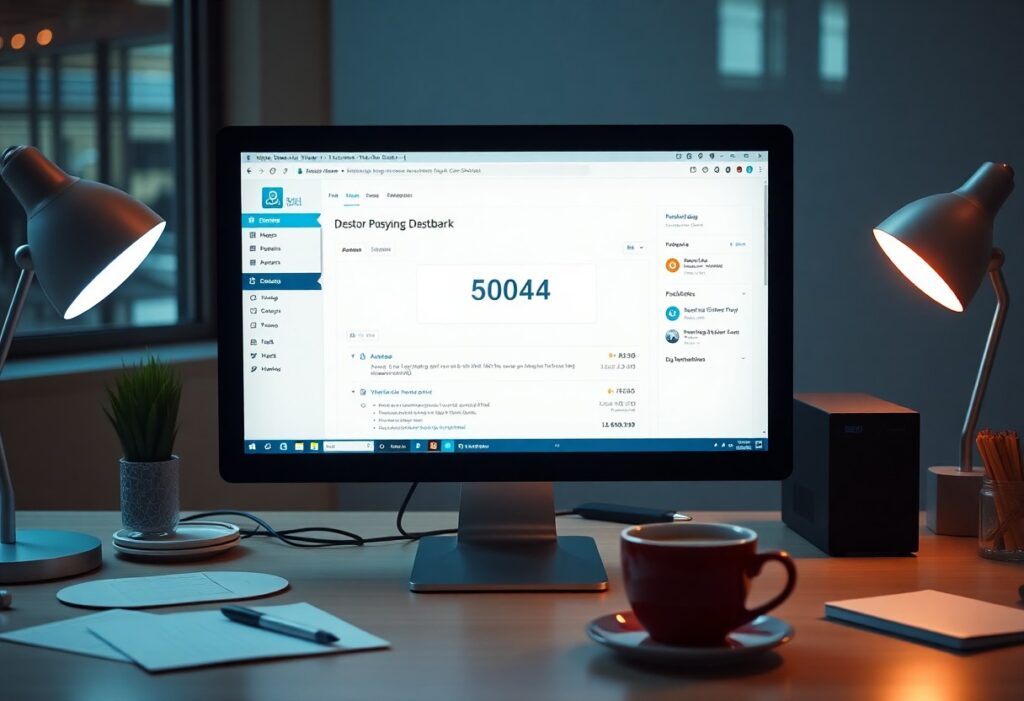Canonical tags are an necessary tool in managing duplicate content issues in WordPress. If left unaddressed, duplicate content can negatively impact your site’s SEO performance and confuse search engines. In this post, you’ll learn effective strategies to implement canonical tags and explore other fixes that will improve your site’s visibility and authority. By understanding and applying these techniques, you can ensure that your content remains unique and impactful.
Understanding Duplicate Content
Identifying duplicate content is vital for maintaining your website’s SEO health. It refers to blocks of content that appear on multiple URLs, which can cause confusion for search engines regarding which version to rank. Duplicate content can take various forms, such as product descriptions, articles, or pages that are duplicated within your own site or across different domains.
What is Duplicate Content?
Duplicate content includes text that appears in more than one location either on your site or on another website. This can happen for various reasons, such as having multiple URLs for the same page or identical content that is unintentionally reused. Whether it’s from copy-pasting or URL parameters, it’s vital to recognize and address these occurrences.
Why Duplicate Content Matters for SEO
Duplicate content can dilute your ranking power and confuse search engines. If search engines find two versions of the same content, they must choose which one to rank, often leading to suboptimal indexing of your pages. This can negatively impact your organic traffic and visibility, as search engines may favor one URL over the other.
In practice, a significant percentage of your web pages might compete for the same keywords, which can lead to lower click-through rates and reduced conversions. According to a study by SEMrush, sites with high levels of duplicate content often experience a drop in domain authority, resulting in lower rankings on search engine results pages. Keeping your content unique and properly implemented with canonical tags can prevent these detrimental effects, ultimately enhancing your SEO strategy.
How to Identify Duplicate Content in WordPress
Identifying duplicate content in WordPress involves examining your site for similar or identical articles, pages, and posts that can harm your SEO. Utilize tools and plugins designed for this purpose, as well as manual methods to uncover hidden duplicates across your site.
Using Tools and Plugins
Several tools and plugins can simplify the process of spotting duplicate content in WordPress. Applications like SEMrush, Screaming Frog, and Copyscape efficiently scan your website, identifying pages with overlapping text. WordPress plugins such as Yoast SEO and Duplicate Post offer features that highlight potential duplicates, making management straightforward.
Manual Checking Methods
Manual checking can be effective, though it requires diligence. Reviewing your existing content within the WordPress editor allows you to check for similarities. Compare the content of pages side-by-side, paying attention to titles, meta descriptions, and body text for repetitions.
To conduct a thorough manual check, start by examining your site’s main navigation and significant pages for potential duplicate titles or meta descriptions. Utilize Google’s search operator by inputting “site:yourdomain.com duplicate term” to pinpoint duplicated content within your site. Document the results to determine which pages need editing or consolidation. This method, while labor-intensive, ensures you have a comprehensive understanding of your content landscape.
Implementing Canonical Tags
Implementing canonical tags effectively can significantly enhance your site’s SEO and resolve issues with duplicate content. Canonical tags inform search engines which version of a page to index, ensuring that you maintain the integrity of your site’s ranks and avoid penalties for duplicate content. Properly utilizing canonical tags streamlines content for better search engine visibility, boosting your site’s overall performance.
What are Canonical Tags?
Canonical tags are HTML elements that help you manage duplicate content by indicating the “preferred” version of a web page. By adding a canonical tag to your HTML, you tell search engines which specific URL you want to be recognized as the original, thus consolidating the ranking signals for duplicate pages. This is particularly useful when variations of content exist across multiple URLs.
How to Properly Use Canonical Tags in WordPress
To use canonical tags in WordPress, you can leverage SEO plugins like Yoast SEO or All in One SEO. These tools simplify the process by automatically generating canonical tags for your pages. Additionally, you should inspect your content for any duplicate pages and manually set canonical URLs when automatic tagging is insufficient or when you want to specify particular URLs for uniqueness.
For accurate implementation, navigate to a post or page in WordPress, locate the SEO plugin settings, and find the canonical URL field. Here, enter the URL of the original content you wish to point to. Ensure consistency across all variants of your content, paying close attention to parameters in the URL, such as tracking codes, that can create duplicates. This strategy not only helps safeguard your site’s SEO authority but also enhances user experience by directing visitors to the most relevant content.
Tips for Preventing Duplicate Content
Maintaining unique content is imperative for improving your site’s SEO. You can prevent duplicate content by following these best practices:
- Utilize canonical tags effectively.
- Implement a well-structured URL structure.
- Avoid scraped content or plagiarizing other websites.
- Use 301 redirects for outdated URLs.
- Limit pagination issues with specific settings.
Any effort to refine these areas will help minimize duplicate content on your site.
URL Structure Best Practices
Creating a clean and organized URL structure enhances user experience and reduces the potential for duplicate content. Use descriptive, keyword-rich URLs that are easy to read. Avoid unnecessary parameters or complex strings that can lead to multiple versions of the same page. Keeping URLs short and intuitive helps search engines index your content more efficiently.
Content Strategy Suggestions
Developing a solid content strategy is vital for keeping your website free of duplicate content. Focus on creating high-quality, keyword-centric original articles that address your audience’s needs. Regularly audit your content to ensure that similar topics are not over-represented. Consider a content calendar to plan diverse subjects and formats that maintain freshness across your site.
Engaging in thorough market research can help identify gaps in your content offerings, allowing you to address unique questions or topics that competitors might overlook. Encouraging guest posts and collaborations can introduce fresh perspectives. Diversifying content formats—such as videos, infographics, and podcasts—reduces the likelihood of repetitive text while appealing to different audience preferences. Structured brainstorming sessions can ignite innovative ideas, helping you maintain the originality that keeps duplicate content at bay.
Factors Influencing Duplicate Content in WordPress
Several factors contribute to duplicate content in WordPress websites. Understanding these elements is imperative in managing SEO challenges effectively. Key influencers include:
- URL parameters
- HTTP vs. HTTPS
- www vs. non-www
- Category and tag archives
- Content management practices
After identifying these factors, you can better optimize your site’s content structure.
Theme and Plugin Considerations
Your choice of theme and plugins can significantly affect duplicate content. Some themes generate multiple URLs for similar content through customization options. Popular plugins, particularly for SEO and caching, may inadvertently create duplicate posts if not configured correctly. Regular audits of your theme and plugins can help mitigate these risks.
Content Syndication and Scraping
Content syndication and scraping are common causes of duplicate content issues. Syndicating your content can lead to others republishing it without proper attribution or canonical tags, which can confuse search engines regarding the original source. Scraping, where automatic tools copy and retain your content on unauthorized sites, exacerbates this problem.
Monitoring your content through tools like Google Alerts can help you track where your content appears online. If you discover copies, reaching out to those site owners may rectify the situation. Implementing canonical tags on your syndicated content ensures that search engines recognize the original source, thereby maintaining your site’s authority. Making use of robots.txt files can help deter scrapers from pulling your content as well.
Other Fixes for Duplicate Content Issues
Addressing duplicate content in WordPress can extend beyond canonical tags. You’ll find various methods to mitigate issues and improve your website’s SEO health. By understanding these solutions, you can create a more streamlined and effective site that ranks better on search engines.
301 Redirects
A 301 redirect permanently points visitors from one URL to another. Implementing this for outdated or duplicate pages helps consolidate your content, ensuring users and search engines go to the correct destination without encountering duplicates.
Noindex Tags
Noindex tags instruct search engines not to index specific pages on your site, preventing them from appearing in search results. This is useful for pages with thin or duplicated content, like tag or category archives, keeping your focus areas optimized.
If you have pages that offer little value to search engines, applying noindex tags can be beneficial. For instance, if you’re running an eCommerce site with multiple product variations, you might have duplicate content across those items. By marking non-important pages with a noindex tag, you preserve your site’s authority while ensuring users still find crucial content. This method ultimately sharpens your site’s focus and can enhance your overall SEO strategy by emphasizing high-quality pages.
To wrap up
Now that you understand the implications of duplicate content in WordPress, implementing canonical tags and other effective fixes will significantly enhance your site’s SEO performance. By taking proactive measures, you can consolidate link equity and ensure search engines correctly index your content. Regularly auditing your site for duplicates and utilizing tools available in WordPress will help maintain the integrity of your content and improve user experience. Prioritizing these strategies will ultimately support your overall online presence and drive more organic traffic to your website.
FAQ
Q: What is duplicate content in WordPress?
A: Duplicate content refers to blocks of content that appear on multiple URLs within a website or across different sites, which can confuse search engines and affect SEO performance.
Q: How can canonical tags help with duplicate content?
A: Canonical tags specify the preferred version of a webpage to search engines, helping to consolidate ranking signals and avoid penalties for duplicate content.
Q: How do I add canonical tags in WordPress?
A: Canonical tags can be added using SEO plugins like Yoast SEO or All in One SEO, which provide options in the page/post settings to set the canonical URL.
Q: What are some common causes of duplicate content in WordPress?
A: Common causes include URL variations (with or without www), printer-friendly versions of pages, parameterized URLs, and content syndication.
Q: Can WordPress themes create duplicate content issues?
A: Yes, poorly coded themes can lead to duplicate content by generating multiple URLs for the same content, often through the use of pagination or archives.
Q: What is the role of 301 redirects in addressing duplicate content?
A: 301 redirects permanently point users and search engines from duplicate pages to a single preferred page, helping consolidate SEO value and eliminate duplicates.
Q: Besides canonical tags, what other fixes can I implement for duplicate content?
A: Other fixes include using 301 redirects, setting up noindex tags on duplicate pages, consolidating similar content, and ensuring proper URL structure.



